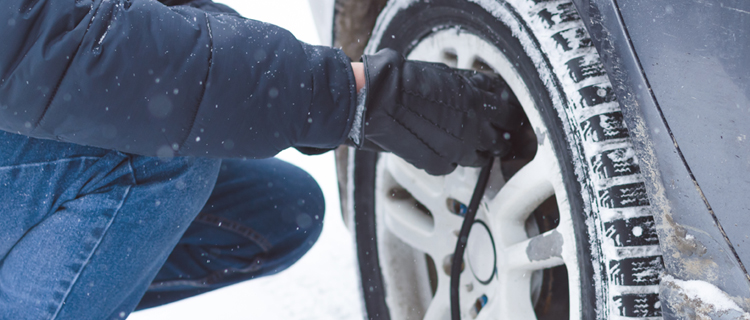Save Money, Stay Safe: How To Manage Tire Pressure In Cold Weather
September 15, 2021
Tires

Today’s post highlights the challenges and benefits of managing tire pressure in cold weather, and explains why Canadian drivers need to check inflation levels more often. Read on or contact your local TIRECRAFT to speak directly with an ASE-certified tire pressure expert near you.
“It Pays” To Manage Tire Pressure In Cold Weather
Research by the Tire and Rubber Association of Canada (TRAC) shows that nearly all (90%) drivers believe they are responsible for protecting the environment by ensuring that their vehicles are as fuel-efficient as possible, and the vast majority (96%) agree that maintaining proper tire inflation plays a big part in that.
“It pays to take care of your tires,” agrees Transport Canada. “Well-maintained tires are better for the environment because they improve your car’s efficiency.”
That’s true for any vehicle, whether you’re driving on standard car tires or specialty agriculture tires. For instance, one study by the USDA Agricultural Research Service found that properly inflated tires produce nearly 25% more pull than overinflated tires, leading to reduced fuel consumption and less total field time.
But the number-one reason to manage tire pressure in cold weather is vehicle safety. When under or overinflated, tire handling characteristics start to change, your treads wear out much faster, and the risks of blowout increase drastically. It doesn’t matter how much you pay for tire performance and safety—those features only work when your tires are properly inflated.
Canadians Fail To Manage Tire Pressure In Cold Weather, Study Shows
Unfortunately, most drivers aren’t doing enough to manage tire pressure in cold weather.
According to TRAC’s 2018 Tire Inflation and Maintenance Study, the majority of drivers (86%) measure their tire inflation pressure only once every 6 months. Similarly, in one study by the National Center for Statistics and Analysis, researchers found that nearly one-third (30%) of all drivers only check tire pressure when their vehicle is being serviced, and a further 26% only check “when they seem low.”
This simply isn’t enough to optimize tire pressure in cold weather, not in Canada, where even chilly fall days can bring about significant pressure loss. In fact, tire pressure drops about 1 pound per square inch (PSI) per 10 degree-drop in temperature. Factor in another 6-18 PSI lost over 6 months of driving—and remember, the average recommended rate is only 30-35—and you’ll see how easily you can dip below recommended minimums.
How To Manage Tire Pressure In Cold Weather: Contact TIRECRAFT
Whether you need to buy a quality handheld tire pressure gauge, or you want to leave your tire pressure maintenance up to the pros, you’ll find everything you need at your local TIRECRAFT. After factoring in your unique vehicle type and local weather conditions, our ASE-certified technicians will advise you on a tire pressure maintenance schedule, then fill your tires to the optimal level and send you on your way. And thanks to the rewards offered through our customer loyalty program, you save even more money for every dollar you invest in your tire pressure maintenance.
To book a free consultation with a certified TIRECRAFT technician near you, use the Find a TIRECRAFT tool.
Back

